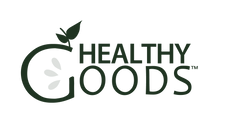You’ve been through 40 weeks of pregnancy and your diet was an important piece of the journey. And now that you’re holding your beautiful baby you’re officially in the postpartum period, which lasts six months, and nutrition is still very important.
What Is Iron?
Iron is a critical mineral throughout postpartum. It’s needed to make hemoglobin, a part of red blood cells that transports oxygen and carbon dioxide. Iron picks up oxygen in the lungs, drives it through the bloodstream and drops it off in tissues like skin and muscles. Then, it picks up carbon dioxide and drives it back to the lungs where it’s exhaled. Not getting enough iron results in anemia. Fatigue, weakness, and dizziness are definitely not symptoms you want to experience when you’re already sleep deprived and have a new baby!
Do I Need Postpartum Iron?
Postpartum iron supplementation may be necessary when blood loss is higher than usual during vaginal delivery or the interval between pregnancies is less than two years. Some practitioners may recommend continuing to take your prenatal vitamins for a few months postpartum. The World Health Organization recommends taking an iron supplement for at least three months after delivery.
During pregnancy, iron needs double, but return to pre-pregnancy levels in the postpartum period, which is 15 mg/day.
Sources of Iron
The body absorbs two to three times more iron from animal sources than from plants. Some of the best dietary sources of iron are: Oysters, lean beef, turkey, chicken, lean pork, and fish.
The body absorbs less of the iron from plants, but every bite counts. Some of the best plant sources of iron are: beans, tofu, dark leafy greens, fortified breakfast cereals, enriched rice, and whole-grain breads. To a lesser extent, potatoes with skin, watermelon, figs, spinach, chard, and dried fruits such as apricots, raisins, and prunes also contain iron.
Tips To Help Replenish Iron Stores:
- Combining vitamin C and iron enhances iron absorption, so eat them together. For example, broccoli and chicken, a peanut butter and jelly sandwich with an orange, a spinach salad with mandarin oranges, cereal with strawberries. Other good food sources of Vitamin C include: strawberries, cantaloupe, citrus fruits, broccoli, cauliflower, cabbage, tomatoes, potatoes, green and red peppers, and citrus juices.
- Cook with cast iron pots to add more iron to your diet.
- Black tea, coffee, whole-grain cereals, unleavened whole-grain breads, and legumes all contain tannic acid, which is shown to inhibit iron absorption. These foods should be consumed separately from iron-fortified foods and iron supplements.
Bottom Line: Eat a balanced diet that includes good sources of iron to prevent any deficiencies. Combine vegetarian sources of iron with vitamin C in the same meal. Ask your healthcare provider if starting an iron supplement or continuing your prenatal supplements is a good idea through the postpartum phase.
In Health and Happiness,
Kelly Harrington, MS, RDN
Registered Dietitian Nutritionist for Healthy Goods
References:
American Dietetic Association. Medical Nutrition Therapy. Chicago, Illinois. 2006.
WHO. WHO recommendations on postnatal care of the mother and newborn. Geneva, World Health Organization; 2013

